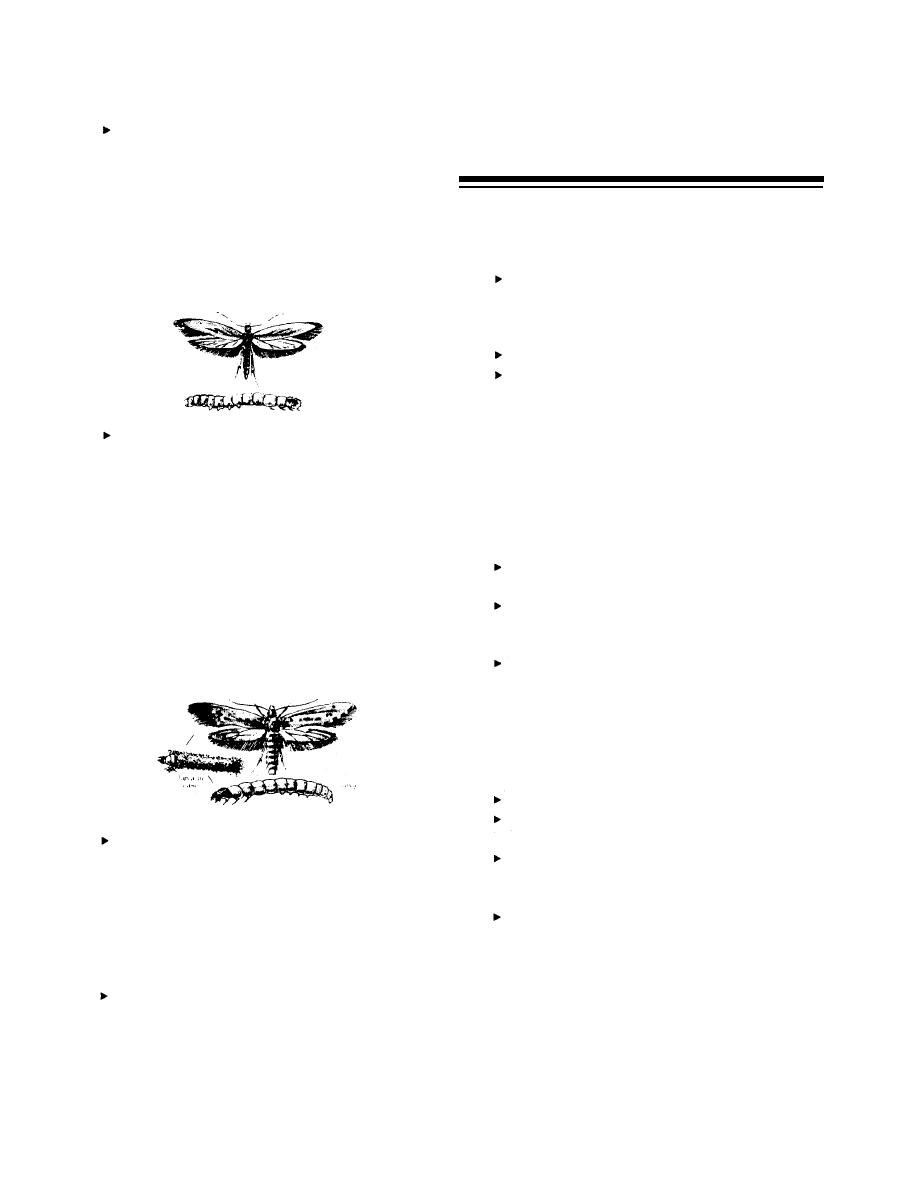

Custom Search
|
|

|
||
 remain in dark areas or not to fly at all. They scuttle
its body which it carries about
down into dark folds of textiles or fur. Clothes moths
when feeding. Mature larvae after
need humidity.
leaving the infestation attach to
the Webbing Clothes moth (Tineola
ceilings and walls a n d p u p a t e
bisselliella) has a length at rest of l/4 to
inside the case.
l/3 inch with a wing span of less than
l/2 inch from tip to tip. Its head and
front wings are a golden buff. Larvae
CONTROL AND MANAGEMENT OF THE
spin fine silk over the area of their
CLOTHES MOTH
infestation. Fecal pellets, pupal cases
Inspection
and cast head capsules catch in the silk
All woolens should be inspected where
creating a messy accumulation.
clothes moths have been sighted,
especially clothing that is stained or has
been worn and not cleaned.
Brush to dislodge eggs.
Look for woolen-based products
introduced from Central and South
America.
the Casemaking Clothes moth (Tinea
pellionella) is the same size as the
Habitat Alteration
Clothes moths cannot live on cleaned wool. They
Webbing Clothes moth, but its head and
are very dependent upon sweat, food or urine-stained
front wings are dusty-brown or tan with
wool, fur, silk, and feathers. Without certain vitamins
three small dark spots on each front
produced by microorganisms growing on the stains,
wing. Casemaking clothes moth larvae
clothes moth larvae will die.
feed on woolen yarn but incorporate
Recommend dry cleaning of all woolens
tiny strands into a silken bag or case
that are in need of it.
that covers their abdomen. They crawl
Advocate that clients inspect all wool
with three pairs of legs and hold the
products in storage and discard those
case with hooks on stumpy abdominal
where use is not projected.
legs. The color of their cases give an
Where there is sudden activity of flying
indication of the color of the infested
moths, look for areas where water leaks
material.
have brought about increased humidity.
Then have all areas with high humidity
ventilated or dehumidified.
Pesticide Application
Clean woolen products.
Make spot applications in storage areas
Larvae:
with approved pesticides.
the Webbing Clothes moth larvae are
Apply naphthalene flakes at the labeled
small, creamy-white caterpillars. The
rate to tight chests and storage bags that
Webbing Clothes moth larvae is
concentrate and hold vapors.
between l/4 to less than l/2 inch at
Paradichlorobenzene (PDB) crystals
most with a white, shiny body. It has a
vaporize much faster than naphthalene
brown head and a brown segment
and must be maintained to insure
behind the head. It is often found in
protection. [Do not allow continued
loose silk webbing.
breathing of either of these pesticides.]
the Casemaking Clothes moth larvae
are slightly longer than larvae of the
Follow-up
Webbing Clothes moth. It is very light
Develop a pest management program with an
or white with a dark brown head. The
emphasis on monitoring for critical museum or stage
segment behind its head is dark brown.
drama collections. Historical textiles cannot be
The caterpillar constructs a case about
Module One, Chapter 5, Pg 4
|
 |
|
 |
||